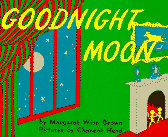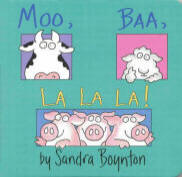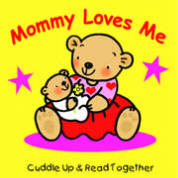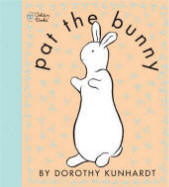
Tips for Buying & Making Preemie Clothes
How to Help Parents of Preemies
Anastasia's first year (2005)
Eating & Reflux (year 2, 2006)
Back to Sleep! (2007)
And Zane, Too (2008)
Allergies & Getting Big (2009)
Starting School (2010)
It's All Good (2011)
Search the Miracle Baby bebsite


Tips on Preemie Development
Many parents of preemies worry their child may have serious developmental delays. It is true that preemies tend to lag behind...at least at first. But there are several important things to remember when we're talking about delays.
First, unless a medical expert says otherwise, they are just delays. Your child will catch up eventually.
Second, don't expect a baby born three months early to keep up with other babies her age. Instead, take into consideration how old your baby would be if she'd been born full-term. Your preemie was born not as fully developed as a full-term baby; therefore, it's unfair to judge her according to full-termer timetables. Always use your baby's corrected age when looking at her development.
Even when using corrected age, it isn't uncommon for extreme preemies (in particular) to be behind. Parents, therefore, need to be watchful of their preemie's development, encouraging it wherever possible.
There are two roads every parent of a preemie should consider:
1. Visiting a local developmental clinic in your area. This clinic should have experts on preemies and child development, as well as physical therapists and occupational therapists used to working with children.
2. Early Intervention, which is a tax payer supported organization that offers home visits and access to physical and occupational therapists.
Another important step is simply to do all those things baby magazines suggest: read to your baby, play music for her, and play with her. These things are important for full-term babies, of course, but are especially important when your child is a preemie and has some catching up to do.
With that in mind, here are some tips and recommendations (along with links to articles by experts).
Toys for Preemies
Several popular toy brands try to convince parents their toys are the only developmental toys out there. But when we're talking about babies, all toys are developmental. Babies are exploring a brand-new world, and even a simple plastic spoon is fun, fascinating, and yes, educational for them.
Some preemies are easily overstimulated by toys with lots of bells and whistles. Fortunately, the toys experts believe are especially helpful are simple, classic toys (like balls and blocks).
One mom of a preemie I know says that Early Intervention told her to buy toys that were just a little advanced for her preemie, even if her child couldn't play "right" with the toys. For example, she bought a stacker for her child at 5 months, even though he couldn't actually remove the rings many months down the line. "My son has never been far behind developmentally, and I think this is one reason why. I'm always gently introducing new toys and games to encourage his development." I think that's great advice!
Relying on the opinion of child development experts, here are some recommendations for your preemie.
For expert advice on toys and games, scroll down.
For ideas on free or really cheap toys you probably already have laying around, scroll down.

Blocks are one of the best toys you can give any baby. They encourage preemies to build eye-hand coordination, and teach shape, size, and color recognition. Trouble is, there aren't many blocks rated for children under one or two, and all wooden or hard blocks could be dangerous when baby is learning to sit, crawl, or walk. But these soft blocks are safe for even very young babies, are chewable, and have interesting pictures on them. They're even good for sensory development, as their sides vary from slick to nubby, soft to firm.
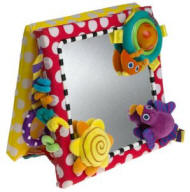
Every baby should be frequently exposed to images of herself (and her parents!) in a mirror. The bathroom mirror works fine, but this baby-safe, no-break mirror is ideal for the tummy time every preemie requires.

Stackers encourage babies to sit and learn about shapes and sizes. Preemies also develop important arm muscles and coordination from stackers. This stacker rewards babies with music, too.
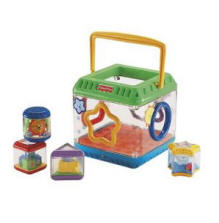
Sorters encourage babies to sit and learn about different shapes. Wooden versions are fine for older kids, but babies (who are likely to chew on the parts) should have a plastic version. This shape sorter has blocks small enough for babies as young as 6 months or so to grasp and each block contains a three-dimensional object. Blocks can be sorted by shape, color, and theme.
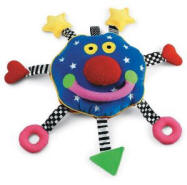
Babies never seem to tire of this toy. Colorful, soft, chewable, and with a mirror hidden under a squeaky nose, this is an ideal toy, and attaches easily to car seats, strollers, cribs, and other baby gagets.
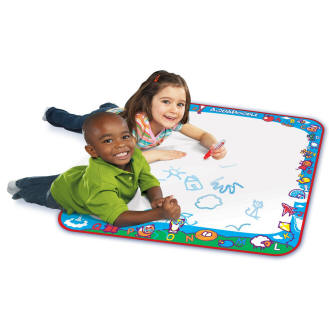
By the time your preemie is 9 or 10 months old corrected age, it's important to start offering drawing materials. Pens can be unhealthy for your flooring, and your baby may tend to eat crayons or pencils. Aqua Doodle solves both problems by using a "magic" water-filled pen. It can't harm your home, and if baby wants to suck and chew more than draw, mom needn't worry.

It's amazing how many mobiles are made for parents, not babies. For preemies, it's especially important to have a baby-friendly mobile; preemies need a head-start on interesting and stimulating toys.
When you're considering any mobile, imagine what it would look like if you were laying beneath it. Would the shapes look flat and similar? Would you be able to see the faces on the critters dangling down? Look for a mobile, like this one, with bright colors, some black and white things (which may be easier for younger babies to see), and actually looks interesting when you lay beneath it. I highly recommend this mobile. Anastasia adored it from the moment she came home and still wanted to play with it once she was big enough to grab at it and pull it down. (At which time I had to put it away.)
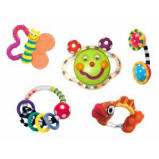
Rattles should be light-weight, easy for small hands to grasp, and (at least until baby learns to control her movements) soft. This colorful set fits the bill.
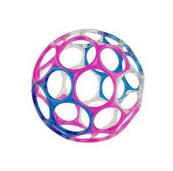
Balls are also important for a baby's development. The Jellies O Ball is a great preemie toy. It's soft and malleable and very easy for little fingers to grab. A plush ball is also great, once a baby is 9 months corrected age or so.
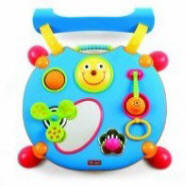
Every baby should have a crib toy. The toy should have buttons and/or rollers that enable the baby to turn it on. This should be rewarded with good music, some lights, and some movement. The best crib toys also have a "cry sensor" that turns on soothing music when the baby cries in the middle of the night.
Once your preemie is starting to toddle, she should have a few push and pull toys:
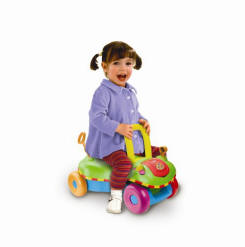
Any type of combined toy that can be pushed and ridden on is a great choice for babies learning to walk.
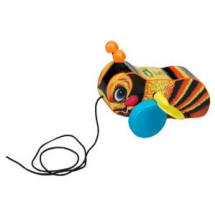
And as babies develop their walking skills, they also
love pull toys. This one is a classic.
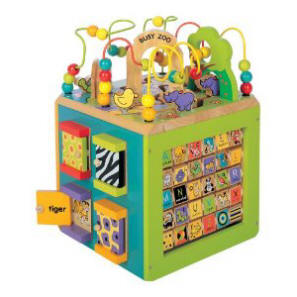
In our area, every pediatrician's office has a busy cube, and every developmental expert we talk to recommends these toys as an excellent toy that will interest a child for many years to come. The trouble is, they are expensive. A decent one is easily over $100. Cubes that are a little less expensive are usually either quite small or poorly made. But here is a busy cube that's made of wood, is a decent size, is colorful, has lots of activities...and is only $50. I highly recommend this toy for babies a year and up.
For babies with special needs, check out this toy catalog: http://www.tfhusa.com/
Not all toys need be purchased. Here are some cheap ideas for developmental baby toys:
-
Buy an inexpensive plastic purse-sized photo album and fill it with photos of your family and pets, or of interesting people, animals, and objects from magazines.
-
Give the baby a big plastic spoon and pot lid to "drum with." (A pie tin and a spoon work well, too.)
-
Measuring spoons and nesting measuring cups are a baby favorite.
-
Babies also love to play with coasters. (Just make sure they don't have cork on the bottom, which can be chewed off and become a choking hazard.)
-
Put a favorite toy or food under a clear plastic cup and let baby figure out how to get at it.
-
Link your baby to her mobile with a soft ribbon tied to her toe. Baby will love that she has control over her mobile. (This game should be supervised.)
-
Draw a simple picture of a baby, or cut one from a magazine. Cover the baby's eyes, nose, mouth, hands, knees, and feet with a piece of paper or fabric and some glue. Lift one piece of fabric at a time and tell baby what part you're showing: "Here's baby's foot!...Here's her nose!" As your baby gets older, ask her to find the baby's hand, nose, etc., and she will lift the appropriate pieces of fabric.
-
When baby's in the tub, give her a plastic cup to fill and pour with water. Outside of the tub, try putting Cheerios (or some other small treat) in the cup.
Find more cheap toys (mostly for toddlers) at "Parent Made Developmental Toys." Scholastic's Parent & Child magazine also regularly features activities and homemade toys for babies. For game ideas for toddlers, see Family Fun magazine.
Other ideas for playtime:
-
Play peek-a-boo.
-
When your baby can support her torso, hold her in the air and gently let her "fly."
-
Change the position of baby's high chair, crib, etc., every once in a while so she has new things to see.
-
Have a conversation with baby where you imagine what she might be saying and reply accordingly.
-
Count things for your baby: flowers, Cheerios, toys, whatever.
-
Walk around the house (or outside) and point things out to baby. While pointing, tell her what the object is. For example: "This is a pretty flower. It's red. It smells nice, too."
-
Play make believe with a fake phone, with stuffed animals, etc.
-
Put scented things under baby's nose and tell her what they are. Ideas: vanilla extract, scented flowers, cinnamon, garlic, aftershave.
-
In the mirror, point out baby's (and parents'!) parts: eyes, nose, mouth, etc.
-
Say "goodnight" and "good morning" to things in the house. When baby gets up in the morning, for example, carry her through the house, waving at various objects. "Good morning couch! Good morning tea pot!"
-
Play patty-cake, Pease Porridge Hot, and any other rhythmic, clapping rhymes are also perfect games for baby.
"The Benefits of Play" (Family Fun Magazine)
"All About Blocks" (Scholastic Parent & Child Magazine)
"Block Play for All Children" (Scholastic Instructor Magazine)
"Supporting Your Preemies' Development" (Pampers)
Books for Preemies
All babies should be read to frequently, but for preemies, books are particularly important. Preemies may tend to lag behind in language skills, but reading to your preemie is a perfect way to encourage such skills. It's also comforting for your baby to hear your voice (and snuggle with you as you read).
Small infants love anything you read (including the newspaper), but even a baby as young as a month old will enjoy looking at colorful pictures in books designed just for babies.
If the illustrations are boring or bland to you, they will be to baby, too. Instead, read books with colorful, fun pictures. Choose board books whenever possible, since handing (and yes, chewing on) books helps babies learn to love reading. Simple, rhyming books have been shown to be most engaging for babies.
Scroll down for expert tips on babies and books.
Any book that fits the above criteria is a good thing, but here are some books that are particularly big hits in our household:
For adults, this book may seem too simple, but it's a baby classic for a reason! Preemies (and full-termers) love the bright, colorful pictures with tons of detail, and the simple, rhyming text. A must have.
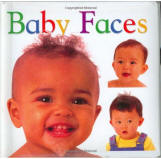
Babies love to look at other babies. This book is a perfect size for small hands, is durable, and quite chewable. It's also a great way to help preemies (who are often unable to be around other babies due to RSV) get some exposure to what other babies look like. And as baby gets older, this book will help teach her how to define her emotions.
Most of Boynton's books are good for toddlers, but this one is a real hit with younger kids, too. The pictures are creative, the text rhymes...and babies love it when you make animal sounds.
The pictures in this board book are very colorful, with foil accents. The rhymes are also fun. The book describes eating pancakes, baking cookies, taking walks, going to the pool, taking a bath, and reading a bedtime story with mommy. Really sweet.
This baby classic is ideal for stimulating preemies. Here, they can pet a soft, furry bunny, see themselves in a mirror, touch a daddy's scratchy (not yet shaved) face, and more.
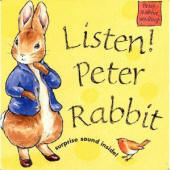
This is a special favorite in our house. The pictures are big and bold, and the text encourages learning about sounds. The end is the best part: listen to Peter Rabbit snore!
Even when Anastasia was only a month old (corrected age), she loved the unique black, white, and red illustrations in this book. Plus, the text is fun - even for parents!
Touch and feel books are an excellent choice for preemies. These sturdy books hold up to chewing, have vivid color photographs of real critters, and varied textures for baby to stroke and explore.
This board book overflows with awesome illustrations. There are vivid color photographs of animals and everyday objects, but what makes this book special is the fabulous artwork by famous artists like van Gogh, Chagall, Degas, and O'Keeffe. Anastasia is fascinated! Plus, each page has cut-out shapes (like the window on the cover), which Anastasia really likes playing with.
When your preemie is a bit older, you might try this book, which described life in the NICU through the eyes of a preemie's big brother.
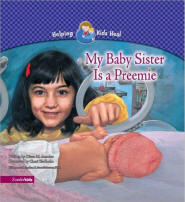
A great book for when your preemie grows older, or for a preemie's siblings, this book does a great job of showing typical NICU scenes in a way that's comforting.
Expert tips on babies and books:
"Choosing Books for Your Baby and Toddler" (Scholastic)
"Exploring Books with Babies" (Scholastic)
"Why Babies Need Books" (Scholastic)
"Enticing a Restless Reader" (Scholastic Parent & Child Magazine)
"Reading Milestones" (PBS)
"Reading to Babies Ups Language Skills" (WebMD)
"Grow a Great Reader" (free ebook)
Music for Preemies
Contrary to what a popular line of baby products would have you believe, letting your baby listen to certain types of music won't make your child any smarter. However, music is soothing to preemies, and upbeat songs can be fun and stimulating, too. In addition, music helps teach math and verbal skills.
Classical music may be most soothing, but you needn't buy classical music made just for babies. In fact, those CDs tend to be full of synthesized music (rather than the more rich sound of a full orchestra) and may be expensive for the amount of music included on them.
CDs of lullabies and pre-school songs are also good choices, but so is almost any type of music that you like to listen to. (Although hard rock may be too stimulating for most babies!)
Scroll down to read expert advice about babies and music.
Here are my recommendations:
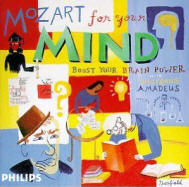
Despite the fact that Mozart's music may not make your baby smarter, studies do indicate that the brain responds to classical music in ways it may not with other types of music. Specifically, listening to classical music seems to improve spatial reasoning (which includes math skills) - at least while you're listening. Mozart is fun for baby and parent alike. This music is soothing, yet full of great rhythms.

Bach is wonderfully mathematical, and interesting to listen to.
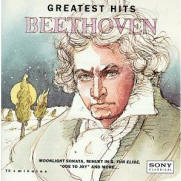
Baby's classical music education wouldn't be complete without some Beethoven!
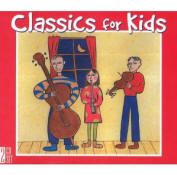
If you only buy one classical music CD for your baby, make it this one. Once your child is a bit older, she will especially appreciate this music collection, which contains not just the typical "baby soothing classics" like Braham's "Lullaby" and Pachelbel's "Canon in D," but exciting, inspire-baby-to-bounce tunes like Rimskij-Korsakov's "Flight of the Bumble Bee" and Aram Khachaturian's "Sabre Dance." Plus, there's an addition CD of the classic musical tale Peter and the Wolf, narrated by Jack Lemmon.
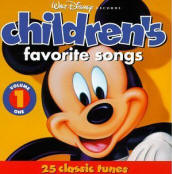
Great classic children's songs, from "I've Been Working on the Railroad" to "Animal Fair."
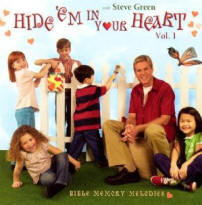
Children learn biblical truths and scripture effortlessly when they are put to these easy to remember tunes.
Expert tips on babies and music:
"Classical Music Does Not a Genius Make" (Baby Center)
"Building Baby's Brain: The Role of Music" (University of Georgia)
"Rhymes for a Reason" (Scholastic Parent & Child Magazine)
"Bonding Through Song" (Scholastic)
"Sing Your Way to Reading Success" (Scholastic)
"Moving to the Music" (Scholastic Parent & Child Magazine)
